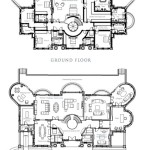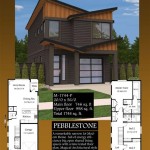Wren bird house plans provide detailed instructions for creating a suitable nesting environment for wrens, small migratory birds known for their delightful singing. These plans typically include diagrams, materials lists, and step-by-step instructions that guide builders through the process of assembling a birdhouse tailored to the specific needs of wrens.
Wren bird houses are often constructed using wood, with measurements engineered to accommodate the small size and specific nesting requirements of wrens. They feature a small entrance hole to protect against larger birds and predators, as well as proper ventilation and drainage holes to ensure a healthy environment for the birds and their offspring.
In the following sections, we delve deeper into the specifics of wren bird house plans, exploring the materials, dimensions, and best practices involved in building a comfortable and inviting home for these charming songbirds.
When designing and building a wren bird house, certain key points should be considered to ensure the well-being and nesting success of these small birds.
- Appropriate size
- Correct entrance hole
- Proper ventilation
- Adequate drainage
- Predator protection
- Durable materials
- Natural nesting materials
- Regular maintenance
By adhering to these guidelines, wren bird house plans can provide a safe and comfortable nesting environment for these delightful songbirds, contributing to their successful breeding and the enjoyment of nature enthusiasts.
Appropriate size
The size of a wren bird house is crucial for the comfort and well-being of its feathered occupants. Too small a house can feel cramped and uncomfortable, while too large a house can be difficult for wrens to keep warm and may attract larger birds that could pose a threat to the wrens and their young.
- Dimensions: Wren bird houses typically measure between 4x4x6 inches and 6x6x8 inches, providing enough space for a pair of wrens to build their nest and raise their young.
- Entrance hole: The entrance hole should be approximately 1 1/4 inches in diameter, which is large enough for wrens to enter and exit easily while small enough to deter larger birds from entering.
- Height: The height of the bird house should be at least 6 inches, providing enough vertical space for the wrens to move around comfortably.
- Depth: The depth of the bird house should be between 4 and 6 inches, giving the wrens enough space to build their nest and incubate their eggs.
By following these guidelines, builders can create a wren bird house that is the appropriate size for these small songbirds, ensuring their comfort, safety, and nesting success.
Correct entrance hole
The entrance hole of a wren bird house is a critical design element that directly impacts the safety and nesting success of its feathered occupants. It should be large enough for wrens to enter and exit easily while small enough to deter larger birds from entering and potentially harming the wrens or their young.
- Size: The entrance hole should be approximately 1 1/4 inches in diameter. This size allows wrens to easily enter and exit the birdhouse while preventing larger birds, such as bluebirds and sparrows, from entering.
- Placement: The entrance hole should be placed near the top of the birdhouse, approximately 1 inch below the roof. This placement helps to protect the wrens and their young from predators and the elements.
- Shape: The entrance hole should be round, as this shape is less likely to attract the attention of predators than a square or rectangular hole.
- Perch: Some wren bird house plans include a small perch below the entrance hole. This perch provides a convenient landing spot for wrens as they enter and exit the birdhouse.
By carefully considering the size, placement, shape, and other aspects of the entrance hole, builders can create a wren bird house that is both inviting to wrens and protective against potential threats.
Proper ventilation
Proper ventilation is essential for the health and well-being of wrens and their young. A well-ventilated birdhouse allows for the circulation of fresh air, which helps to remove moisture and prevent the build-up of harmful gases. This is especially important during hot weather, as wrens can become overheated if the birdhouse is not properly ventilated.
There are several ways to ensure proper ventilation in a wren bird house. One is to include ventilation holes in the design of the birdhouse. These holes should be small enough to prevent drafts, but large enough to allow for the circulation of air. Ventilation holes can be placed near the top of the birdhouse, under the eaves, or on the sides of the birdhouse.
Another way to improve ventilation is to use a breathable material for the construction of the birdhouse. Wood is a good choice for a wren birdhouse, as it is both durable and breathable. Avoid using materials such as plastic or metal, which do not allow for the circulation of air and can trap moisture inside the birdhouse.
By following these tips, builders can create a wren bird house that is properly ventilated and provides a healthy environment for its feathered occupants.
In addition to proper ventilation, it is also important to ensure that the birdhouse is placed in a location that receives good air circulation. Avoid placing the birdhouse in a sheltered area, as this can restrict airflow and lead to the build-up of moisture and harmful gases.
Adequate drainage
Adequate drainage is essential for the health and well-being of wrens and their young. A well-drained birdhouse prevents the build-up of moisture, which can lead to the growth of mold and mildew. Mold and mildew can cause respiratory problems in wrens and can also damage the eggs and nestlings.
- Drainage holes: One of the most important aspects of adequate drainage is to ensure that the birdhouse has drainage holes. These holes should be placed in the bottom of the birdhouse, and they should be large enough to allow water to drain out easily.
- Sloped roof: Another important aspect of adequate drainage is to make sure that the roof of the birdhouse is sloped. This will help to prevent water from pooling on the roof and seeping into the birdhouse.
- Avoid placing the birdhouse in a low-lying area: When choosing a location for the birdhouse, it is important to avoid placing it in a low-lying area where water is likely to collect. This will help to prevent the birdhouse from becoming waterlogged.
- Regular cleaning: It is important to regularly clean the birdhouse to remove any debris that may have accumulated. This will help to keep the birdhouse dry and free of mold and mildew.
By following these tips, builders can create a wren bird house that is well-drained and provides a healthy environment for its feathered occupants.
Predator protection
Protecting wrens from predators is an important consideration when designing and building a wren bird house. Predators such as cats, snakes, and squirrels can easily access and harm wrens and their young if the birdhouse is not properly designed and placed.
One of the most effective ways to protect wrens from predators is to place the birdhouse in a location that is not easily accessible to predators. This means avoiding placing the birdhouse on the ground or on a low branch. Instead, place the birdhouse at least 5 feet above the ground and on a tree trunk or post that is not easily climbed by predators.
Another way to protect wrens from predators is to make sure that the entrance hole is small enough to prevent larger predators from entering. The entrance hole should be approximately 1 1/4 inches in diameter, which is large enough for wrens to enter and exit easily but too small for larger predators to fit through.
In addition to the placement and size of the entrance hole, the design of the birdhouse itself can also help to protect wrens from predators. Avoid using materials that are easily chewed through by predators, such as plastic or thin wood. Instead, use durable materials such as cedar or redwood, which are more difficult for predators to penetrate.
By following these tips, builders can create a wren bird house that is well-protected from predators and provides a safe nesting environment for these small songbirds.
Durable materials
When choosing materials for a wren bird house, durability is an important consideration. The birdhouse will be exposed to the elements, including rain, snow, and wind, and it needs to be able to withstand these elements without deteriorating. Durable materials will also help to protect the birdhouse from predators, such as squirrels and raccoons.
One of the most durable materials for a wren bird house is cedar. Cedar is a naturally rot-resistant wood, which means that it will not decay or rot easily. Cedar is also a strong wood, which makes it difficult for predators to chew through. Another durable material for a wren bird house is redwood. Redwood is also a naturally rot-resistant wood, and it is also resistant to insects and pests. Redwood is a strong wood, but it is not as strong as cedar.
If you are using a different type of wood for your wren bird house, such as pine or fir, you can treat the wood with a water-resistant sealant to help protect it from the elements. You can also paint or stain the birdhouse to help protect it from the sun’s UV rays.
No matter what type of material you choose for your wren bird house, make sure that it is thick enough to provide insulation for the birds. The walls of the birdhouse should be at least 1/2 inch thick, and the roof should be at least 3/4 inch thick.
By choosing durable materials and constructing the birdhouse properly, you can create a wren bird house that will provide a safe and comfortable home for these small songbirds for many years to come.
Natural nesting materials
When it comes to providing a nesting site for wrens, natural nesting materials are always the best choice. Natural materials are breathable, allowing for proper air circulation and moisture regulation, which is essential for the health of the nestlings. They also provide insulation, helping to keep the nest warm in cold weather and cool in hot weather. Additionally, natural nesting materials are familiar to wrens, which makes them more likely to accept and use the birdhouse.
- Twigs: Twigs are one of the most common natural nesting materials used by wrens. They are readily available and can be easily gathered from the ground or from trees. Twigs provide a sturdy base for the nest and help to create a protective barrier around the eggs and nestlings.
- Leaves: Leaves are another common natural nesting material used by wrens. They are soft and provide insulation, helping to keep the nest warm and comfortable. Leaves can also be used to line the nest, creating a soft and cozy environment for the nestlings.
- Moss: Moss is a great natural nesting material because it is soft, absorbent, and insulating. It can be used to line the nest or to create a soft bed for the eggs and nestlings. Moss also helps to absorb moisture, which can help to keep the nest dry and prevent the growth of mold and mildew.
- Grass: Grass is another good natural nesting material because it is soft and pliable. It can be used to line the nest or to create a soft bed for the eggs and nestlings. Grass is also a good insulator, helping to keep the nest warm and comfortable.
When providing natural nesting materials for wrens, it is important to avoid using materials that are treated with chemicals or pesticides. These chemicals can be harmful to the birds and their young. It is also important to avoid using materials that are too long or stringy, as these materials can become entangled around the birds or their young and cause injury.
Regular maintenance
Regular maintenance is important to keep your wren bird house in good condition and to ensure that it remains a safe and comfortable home for its feathered occupants. Here are four key maintenance tasks to perform on a regular basis:
- Clean the birdhouse: The birdhouse should be cleaned once a year, or more often if it is heavily used. To clean the birdhouse, remove the old nesting material and any debris that has accumulated. Wash the birdhouse with a mild soap and water solution, and allow it to dry completely before putting it back up.
- Inspect the birdhouse for damage: The birdhouse should be inspected for damage every year, or more often if it has been subjected to severe weather conditions. Look for any cracks, holes, or other damage that could allow predators or the elements to enter the birdhouse. Repair any damage promptly.
- Replace the nesting material: The nesting material should be replaced every year, or more often if it becomes soiled or wet. Fresh nesting material will provide a clean and comfortable environment for the wrens and their young.
- Monitor the birdhouse for activity: The birdhouse should be monitored for activity throughout the nesting season. If you notice any signs of activity, such as wrens entering or exiting the birdhouse, or the presence of eggs or nestlings, avoid disturbing the birds. Once the nesting season is over, you can clean and inspect the birdhouse, and replace the nesting material.
By following these simple maintenance tasks, you can help to ensure that your wren bird house provides a safe and comfortable home for these small songbirds for many years to come.










Related Posts








